| Todd | 11-05-2010 | comment profile send pm notify |
|
Ok lets hear your story, let everyone know what has happened when you brake this simple basic rule. http://video.concretepumping.com/videos/329/power-lines http://video.concretepumping.com/videos/361/hit-power-lines http://video.concretepumping.com/videos/420/this-guy-needs-some-17-stickers
|
||
| Todd | 11-05-2010 | reply profile send pm notify |
|
|
||
| Todd | 11-05-2010 | reply profile send pm notify |
|
|
||
| Todd | 11-05-2010 | reply profile send pm notify |
|
If you dont want to post your concrete pumping power line story you can send it to me and I will post it for you. Just email it to me at todd@concretepumping.com |
||
| Todd | 11-05-2010 | reply profile send pm notify |
|
|
||
| Todd | 11-05-2010 | reply profile send pm notify |
|
On May 5, 1997, a 21 year old, male concrete pump truck operator (the victim) was electrocuted when the boom of the truck he was operating contacted a 14.4 kilovolt (kV) overhead power line. The victim had completed the process of cleaning the pump line with the two lower sections of the boom elevated, in an oblique position relative to the truck. As he collapsed the boom, the end of the middle section touched an overhead high voltage power line. The concrete truck driver (the witness) who was standing in rear of the pump truck and facing the victim, heard a zapping noise. The victim collapsed still holding the remote control box. The witness lifted the remote control box from the victim’s hands using a 2x4 wood stud and then checked the victim for a pulse. Emergency medical services were called. The victim was airlifted to the nearest medical center but was pronounced dead on arrival. http://www.epi.hss.state.ak.us/injury/occupation_injury/facts/FACE97-AK-013.pdf |
||
| Many | 11-05-2010 | reply profile send pm notify |
|
Todd Personally I would love to see all these you can find.Perhaps then it will help end the argument on just how close one can get. |
||
| Todd | 11-05-2010 | reply profile send pm notify |
|
Sioux City, IA– A worker is hospitalized in critical condition after being shocked by electrical wires at a residential construction site. The workplace accident occurred in the 6100 block of Morningside Avenue on Thursday, July 22, 2010, reports the Sioux City Journal. According to the Woodbury County Sheriff’s Office, a 30-year-old man was working with a cement pumping truck when he sustained a life-threatening shock. The worker, identified as James Carroll, was shocked when the concrete pumping boom came into contact with overhead electrical wire. Responding emergency medical services crews rushed Carroll by ambulance to Mercy Medical Center—Sioux City for treatment. He is currently listed in critical condition. Siouxland Concrete Pumping reportedly employs Carroll. Bystanders, off-duty deputies and EMS employees assisted the injured worker until emergency crews from several agencies arrived at the scene. A full investigation is underway. Officials with the U.S. Occupational Safety and Health Administration (OSHA) are expected to arrive at the scene to conduct an investigation as well. |
||
| Todd | 11-05-2010 | reply profile send pm notify |
|
STATE INDUSTRIAL INSURANCE SYSTEM v. ORTEGA CONCRETE PUMPING INC
STATE INDUSTRIAL INSURANCE SYSTEM, Nevada Power Company, Inc., Ronald Garamendi, Mindy Garamendi and John Garcia, Appellants, v. ORTEGA CONCRETE PUMPING, INC., Respondent. No. 26284. -- December 30, 1997 Beckett & Yott, Ltd., Carson City, for Appellant State Industrial Insurance System.Cohen, Johnson & Day, Las Vegas, for Appellant Nevada Power Company.Harrison Kemp & Jones and Derek C. Ence, Las Vegas, for Appellants Garamendi and Garcia.Lyles, Austin & Burnett and John R. Hawley, Las Vegas, for Respondent.Bradley, Drendel & Jeanney, Reno, Amicus Curiae Nevada Trial Lawyers Association. OPINION Ronald Garamendi and John Garcia worked for Las Vegas Paving (LVP) and were electrocuted while they were pouring a concrete floor for a new flood channel in Las Vegas. Due to the depth of the excavated channel, LVP needed a pump truck to transport the concrete from Nevada Ready Mix's trucks to the floor of the channel. LVP hired Ortega Concrete Pumping, Inc. (Ortega) to provide the pump truck. On the day of the concrete pour, the boom of Ortega's concrete truck, operated by an Ortega employee, struck an overhead power line, sending a high voltage current down into the channel where Garamendi and Garcia were working; both sustained serious injuries. Garamendi (and his wife) and Garcia filed an action against Ortega and Nevada Power Company for personal injuries, and the State Industrial Insurance System (SIIS) filed a complaint against Ortega seeking subrogation of benefits paid to the injured men. Ortega claimed that it was a subcontractor or independent contractor 1 of LVP and was, therefore, a statutory co-employee of the injured men immune from liability under the exclusive remedy provisions of the Nevada Industrial Insurance Act (NIIA). The lower court agreed and granted summary judgment in favor of Ortega on both complaints. We conclude that this case was not ripe for summary judgment and, therefore, reverse and remand this case to the district court for further proceedings. FACTS Garamendi and Garcia were employees of LVP. Clark County contracted with LVP to build a flood channel at the Las Vegas intersection of Nellis Boulevard and Flamingo Road. Garamendi testified in a deposition that all of LVP's projects related to constructing storm drains or bridges. On August 2, 1991, Garamendi and Garcia were sent to the job site to pour the concrete floor and walls of the excavated flood channel. Power lines, owned and maintained by Nevada Power Company, were located above one end of the excavated channel. The day before the concrete pour was to take place, LVP called Ortega to deliver a concrete pump truck to the site, to be used for two hours. LVP needed a pump truck because safety codes prohibited dropping wet concrete from a height greater than five feet. As the floor of the channel excavated by LVP was more than five feet below the road, the concrete could not be dropped from the chutes of Nevada Ready Mix's trucks, from whom LVP had purchased the concrete. Ortega billed LVP at an hourly rate for the entire time that the truck was at the job site, regardless of whether it was in use, for a total of four hours. There was no contract between LVP and Ortega, and Ortega did not have, and was not required to have, a contractor's license. Ortega had a pump truck with a tall boom through which concrete was pumped via a hose extending from the boom. Nevada Ready Mix loaded the concrete into Ortega's pump truck, and the concrete was then pumped up the hose attached to the boom. Mr. Ortega controlled the hydraulic boom's movements with two joysticks, and Garamendi and Garcia were at the end of the hose pouring and finishing the concrete as it came into the flood channel. Towards the end of the pouring project, some water leaked through the channel and damaged one corner of the pour, the corner closest to the power lines. Garamendi and Garcia went back to re-pour a section of that corner. At this point, Mr. Ortega turned control of the pump truck over to his employee, Eddie Williams, who had recently arrived at the project. Garamendi and Garcia then finished repairing the corner. After they had stopped working, Williams allegedly hit the power lines with the boom of the pump truck; a current raced down the boom seeking ground and passed through Garamendi (who was still holding the hose) and Garcia, severely burning them both. SIIS paid workers' compensation to Garamendi and Garcia but filed suit against Ortega on November 24, 1992, seeking reimbursement for those benefits paid. On July 28, 1993, Garamendi, his wife, and Garcia filed their own action for personal injury damages against Ortega as a third-party tortfeasor. SIIS's action was consolidated with Garamendi and Garcia's actions.2 On March 25, 1994, Ortega filed a motion for summary judgment claiming that the consolidated lawsuits pending against it were barred by the exclusive remedy provisions of Nevada's workers' compensation statutes, which provide that the sole source of redress for an employee injured by the negligence of his employer or fellow employees is workers' compensation. The lower court concluded that Ortega was immune from suit because Ortega was acting as LVP's sub-contractor at the time of the accident and was thus a fellow employee of the injured LVP employees; accordingly, the district judge granted Ortega's summary judgment motion. Garamendi and Garcia filed a motion for reconsideration and provided the district court with affidavits from the Nevada State Board of Contractors (NSBC) and various concrete pumping companies in support of their contention that the judge had erroneously concluded that Ortega was a subcontractor of LVP. SIIS presented the lower court with the affidavit of Kay H. Barber, the executive officer of NSBC, which stated that “[t]he NSBC does not require that concrete pumping services be licensed because their work does not fall within the definition of contractors/subcontractors in NRS 624.020,3 or of concrete contractors under NAC 624.230.” (Emphasis added.) Barber stated that “[t]he concrete pumping truck is merely a conduit through which the concrete passes from the concrete mixing/delivery truck [i.e., Nevada Ready Mix] to [a] location on the construction site where the concrete is needed.” She further declared that the act of providing and operating a concrete pumping device, such as a concrete pumping truck, at the request of another contractor does not mean to “construct, alter, repair, add to, subtract from, improve, move, wreck or demolish any building, highway, road, railroad, excavation or other structure, project, development or improvement, or to do any part thereof,” as specified in NRS 624.020. Following a hearing, the district court denied the reconsideration motion. This timely appeal ensued. No transcript of the lower court's hearing on Ortega's motion for summary judgment exists in the record. However, the minutes from that hearing state the district judge's declaration: “The Court thinks Ortega is acting as a contractor and ORDERED, the motion is GRANTED.” In deciding that no genuine issue of fact existed that Ortega had been acting as LVP's subcontractor, the district court focused on the fact that Ortega had an operator driving the pump truck and did not just have its equipment at the job site when the accident occurred. Notwithstanding SIIS's argument that the pump truck was merely a conduit to move the cement from Nevada Ready Mix's trucks to the bottom of the flood channel for installation by LVP, the judge found the fact that Ortega and LVP employees were all at the same job site working on the same project dispositive. On these facts, it appears that the judge concluded that, as a matter of law, Ortega was acting as a subcontractor of LVP, LVP was Ortega's statutory employer, and thus, Ortega and the injured plaintiffs were statutory co-employees. DISCUSSION “[S]ummary judgment is proper only when there are no issues of fact and the moving party is entitled to such an expedited judgment as a matter of law.” Butler v. Bogdanovich, 101 Nev. 449, 451, 705 P.2d 662, 662 (1985); NRCP 56. Summary judgment will not lie where there is the slightest doubt as to the operative facts. Washoe Medical Center v. Churchill County, 108 Nev. 622, 625, 836 P.2d 624, 626 (1992). In this appeal, SIIS and Ortega debate the proper means of determining whether Ortega was a statutory employee of LVP (and thereby a fellow employee of the injured workers) for purposes of invoking the exclusive remedy provision of the NIIA. We recently resolved this issue in Tucker v. Action Equipment, 113 Nev. 1349, 951 P.2d 1027 (1997). In Tucker, we held that in a construction case, where the defendant is not a licensed contractor pursuant to NRS Chapter 624, the “normal work test,” articulated in Meers v. Haughton Elevator, 101 Nev. 283, 286, 701 P.2d 1006, 1007 (1985), must be applied to determine the issue of immunity. Tucker, 113 Nev. at ----, 951 P.2d at 1031. Accordingly, pursuant to NRS 616B.603(1)(b), which codified the Meers “normal work test,” the relevant factual inquiry in the instant case is whether LVP was in the “same trade, business, profession or occupation” as Ortega at the time of the accident. The parties further contest the viability of what this court has labeled the “control test.” In Tucker, we concluded that “the legislature intended the use of only the Meers test” in construction cases involving an unlicensed independent contractor. Tucker, 113 Nev. at ----, 951 P.2d at 1032. We explicitly held that the five-factor control test set forth in Leslie v. J.A. Tiberti Constr., 99 Nev. 494, 497, 664 P.2d 963, 965 (1983), “is no longer the primary standard applicable to determine whether one is immune from suit under NIIA. Rather, the issue of control is only one factor to be considered in resolving ‘normal work’ issues under Meers.” Tucker, 113 Nev. at ----, 951 P.2d at 1031. Pursuant to our holding in Tucker, in a construction case involving an unlicensed contractor, the relevant inquiry is whether Ortega was in the “same trade, business, profession or occupation” as LVP at the time of the accident. Accordingly we remand this case to the district court to determine if genuine issues of material fact exist as to whether Ortega satisfied the “normal work test.” 4 CONCLUSION The district court must consider the motion for summary judgment in light of the “normal work test” codified at NRS 616B.603 and determine whether there are issues of fact to be resolved at trial. Therefore, we reverse the district court's order granting summary judgment and remand this case to the district court for further proceedings consistent with this opinion. FOOTNOTES 1. In referring to Ortega's status, the terms “contractor,” “subcontractor,” and “independent contractor” are used interchangeably by the lower court and the parties. For purposes of the instant analyses, these terms are functional equivalents. See, e.g., NRS 616A.320 (formerly NRS 616.115) (“ ‘Subcontractors' shall include independent contractors.”); NRS 616A.210 (formerly NRS 616.085) (subcontractors and independent contractors are both considered employees of the principal contractor). 2. Appellants Garcia, Garamendi (and his wife), and SIIS, shall be collectively referred to in this opinion as “SIIS.” 3. NRS 624.020 provides, in pertinent part:2. [A] contractor is any person, ․ who in any capacity other than as the employee of another with wages as the sole compensation, undertakes to, or offers to undertake to, or purports to have the capacity to undertake to, or submits a bid to, or does himself or by or through others, construct, alter, repair, add to, subtract from, improve, move, wreck or demolish any building, highway, road, railroad, excavation or other structure, project, development or improvement, or to do any part thereof, including the erection of scaffolding or other structures or works in connection therewith․3. A contractor within the meaning of this chapter includes subcontractor or specialty contractor․ 4. We reject SIIS's contention that Ortega was not a “contractor” pursuant to NRS 624.020(3) because it was merely a supplier of equipment to the job site. Ortega furnished neither materials nor supplies in this instance. Our refusal to grant Ortega immunity as a matter of law stems from the fact that it was not licensed as a construction contractor under NRS Chapter 624. |
||
| Todd | 11-05-2010 | reply profile send pm notify |
|
http://m.sccourts.org/opinions/displayOpinion.cfm?caseNo=4001
|
||
| Todd | 11-05-2010 | reply profile send pm notify |
| Todd | 11-05-2010 | reply profile send pm notify |
|
Two firms have been convicted for failing to protect a young worker killed after a concrete pump he was handling struck 11kV power lines. RL Davies & Sons and Permanent Flooring have been ordered to pay a total of almost £59,000 for a lack of written risk assessments and controls that led to the death of 19-year-old Miall Gwyn Roberts in May 2004. Roberts worked for a firm contracted to provide labour to RL Davies & Sons, who were principal contractor on a project to build a factory at Bala Industrial Estate in Snowdonia for the Welsh Development Agency. He was pouring concrete for the foundations of a factory using a mobile pump when the pump's raised boom struck the power line, severing it and fatally electrocuting him. Pump operator Darren Gittins also received a shock but was not seriously harmed. The Crown Prosecution Service subsequently decided not to pursue RL Davies or Permanent Flooring -which was contracted to supply the concrete pump and an operator - but the HSE pressed charges against both firms. HSE inspector Chris Wilcox told HSW the contractors knew the risk of operating the concrete pump near the lines, but hadn't completed a written risk assessment; the only control measure was a verbal instruction to the driver of the truck on where to park it. The pump had been parked a safe distance away in the morning but had been moved closer to the lines before the accident, to make pouring easier. "This was a very high-risk operation: using a concrete pump on a site crossed by overhead lines," Wilcox said. "We would have expected them to have a very robust written method statement properly communicated to the workers involved in the job with probably a pre-start meeting on the morning of the concrete pour, plus some markings on site so everybody knew the proximity of the lines." Network Operator SP Power Systems had been due to remove the lines the week after the accident to accommodate the steelwork for the factory structure. "Ideally they should not have done the concrete pour until the lines had been moved," said Wilcox. At Mold Crown Court on 18 June, Judge Dafydd Hughes fined RL Davies & Sons £25,000 plus £15,800 costs for breaching Section 3(1) of the Health and Safety at Work Act. Permanent Flooring was fined £6,000 plus £12,000 costs for a similar charge and was convicted, but not fined, for a charge of failing to safeguard their employee, Darren Gittins. |
||
| Todd | 11-05-2010 | reply profile send pm notify |
|
I found this photo on line, here is what the caption said. I have a hard time beliving anyone would do this. "pump delivers liquid concrete from the driveway over the power lines and trees
|
||
| Many | 11-05-2010 | reply profile send pm notify |
|
I have to say that's the way it was in yesteryear.Awareness really didn't take hold till the acpa got it's start. |
||
| Todd | 11-05-2010 | reply profile send pm notify |
|
Bad Bad Bad
|
||
| seedless | 11-05-2010 | reply profile send pm notify |
|
I for one am quite mad at our safety code here in BC Canada.
We had a mixer truck pull up to a concrete pump, pumping in an alley over the high voltage, the driver a long time pump operator, relaxing driving his mixer now refused to deliver. We never heard much, after our wcb was suppose to investigate.
We were told it was allowed, by law with a trained hydro spotter.
Now bear in mind BC has a 10ft rule, that is bad enough.
That pump company, is direct comp with us, but very large and seem to have allot of clout. I asked at the most recent meeting what ever happened, no one knew what happened hmmmm.
But knew Sam twisted his ankle in Africa. Oxy moron for me. |
||
| rusty22 | 11-07-2010 | reply profile send pm notify |
|
Mixer driver was lucky.A 2x4 will conduct electricity |
||
| Dipstick | 11-10-2010 | reply profile send pm notify |
|
Just wondering Todd or any other expert.... The 2nd pic from here up looks like quite an insignificant lower voltage power line. One that goes in to my house for example.. Does the 20 foot rule count for these aswell?? |
||
| bigstick | 11-11-2010 | reply profile send pm notify |
|
No going over these wires will not hurt a thing. Go to your washroom, unplug the clothes dryer from the machine but leave it pluged into the wall, put the white and red wires together and then tell me we dont need to worry about the small voltage going from the power pole into a residental home. 20 FOOT RULE AT A MINIMUM!!!!!!!!!!!!! |
||
| Dipstick | 11-11-2010 | reply profile send pm notify |
|
Ok. Just wondering. Since these are insulated. Quite scary when you think of it. Some of these lines hang so low you might almost hit them with a ladder or a large umbrella when you walk under them. |
||
| Pump N00b | 11-13-2010 | reply profile send pm notify |
|
Ever walked over a bridge over a railway? |
||
| Dipstick | 11-13-2010 | reply profile send pm notify |
|
Yes. It's crazy actualy. Think how close your boom is to the wires when you cross the crossing!! Lucky we drive on rubber ;-) Can you imagine in england they had the power between or on the rails !! |
||
| Dipstick | 11-13-2010 | reply profile send pm notify |
|
OSHA regulations. Some state that low voltage lines only require 3 feet distance. CANT THEY FIRST FIGURE IT OUT BEFORE TELLING US WHAT TO DO!!! very irritating and dangerous that the rules vary so much and are so hard to find out. I have been in several safety courses and i have always learned that the distance depends on the amount of volts. But when I search the web it's very hard to find the exact numbers. I find that a sad situation... Ok. We can say lets just keep 20 foot to be sure. But our customers may have different opinions. And our competators to. Which rules will they follow??? Because there are many different ones. |
||
| Pump N00b | 11-13-2010 | reply profile send pm notify |
|
You're in Norway, so don't mind OSHA. |
||
| Dipstick | 11-13-2010 | reply profile send pm notify |
|
Thanks pump noob. That's some good info. But you get my point don't you? We hear so many different storys. In holland its different again. Maybe we have different kind of electricity ;-) I am just happy I survived my 'DAY'... I unpacked the boom on a very very misty day. Couldn't see 10 meters. Had to boom into a building and did a floor with a load of system on it. After a few hours the mist dissapeared......... I was standing right under a massive high voltage line!!!! No one at the site knew they where there. Can you just imagine the luck .... :-o |
||








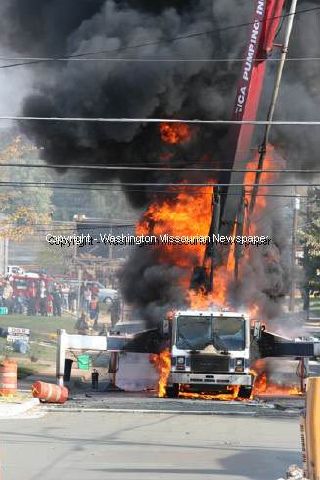
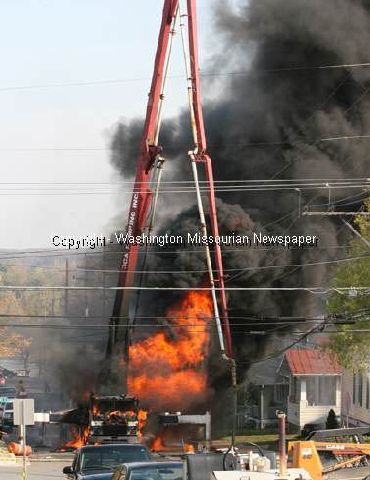
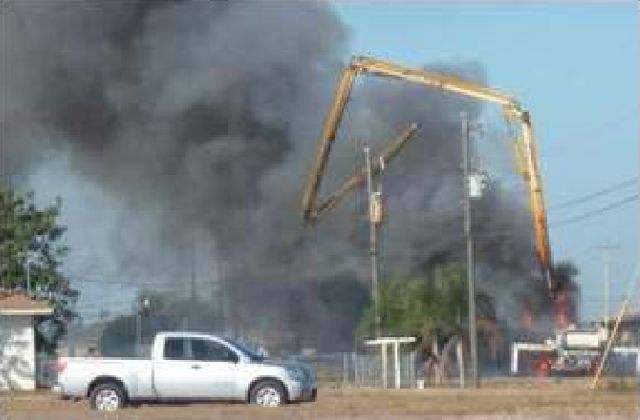
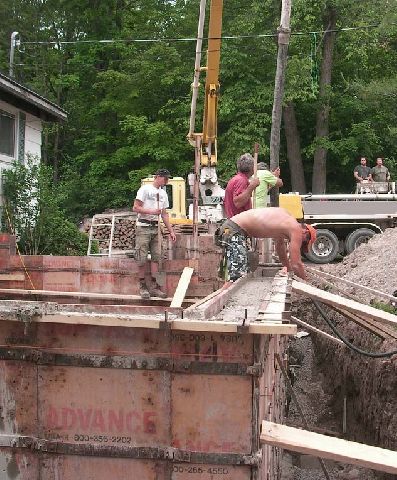
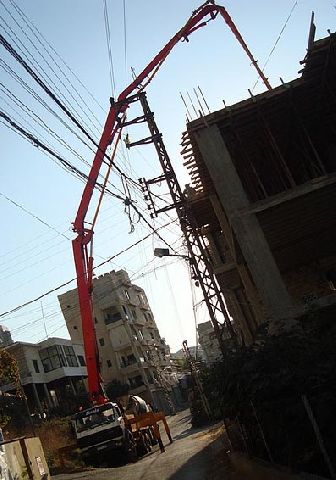












.jpg)
.gif)

.jpg)









.jpg)








